Coat Color Genetics
You can also see the different colors as they grow on this page.
To date, there are at least ten known loci that control coat color in gerbils; each locus controls a different trait. Each of these loci has a dominant allele, that usually represents the form of the trait commonly found in the wild, and at least one recessive allele, representing a less common form of the trait. The eight loci discussed on this page are: A, C, D, E, P, Uw, Sp, and Re. I will also touch on Steel-factor, which is a different sort of locus. The loci not discussed include the Semi-Dominant Lethal Spotting and Wavy mutations, which are not known to be present in the USA at this point.
To understand how these loci work, it is necessary to know how color is structured on the hair.

B: The middle band is a golden brown. Because of the way the individual hairs of the coat overlap, this middle band is the most visible, and contributes most to the perceived overall color.
C: The tip of the hair is black, which gives rise to "ticking", the stippled appearance of colors such as Agouti and Nutmeg.
This gray-brown-black pattern causes the wild-colored coat to appear a dark brown.
Navigation
| A-locus | C-locus | D-locus | E-locus | P-locus | Uw-locus | Sp-locus | Re-locus | Steel-factor |
The Uw-locus: Underwhite
Until relatively recently, the Underwhite (Uw) locus was known as the Gray (G) locus. For a long time, there was only one mutation at the "G-locus"; it didn't seem to match any known mutation in other rodent species, so it was simply called gray (g). The recessive "gray" worked by diluting yellow pigment to cream, while only slightly reducing black pigment.
Then in 2000, a new mutation was identified at the same locus. Provisionally named "satin" (gx), it also diluted yellow pigments to cream, but completely removed black pigment. With this new information, fanciers were finally able to match the "Gray" locus to the Underwhite locus in mice. The newer gerbil mutation acted like the underwhite mutation (uw) in mice, while the older "gray" lined up with the effects of the intermediate underwhite-dense (uwd) mutation.
The transition from Golden Agouti (Uw-) to Silver Agouti (uwduwd) is striking; the Silver is a grayscale version of the Golden, the color somewhat resembling that of a chinchilla.
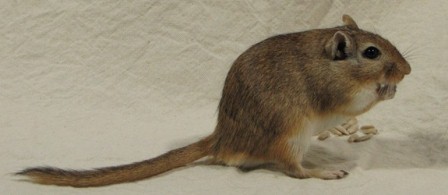

A- C- D- E- P- Uw- :: Agouti
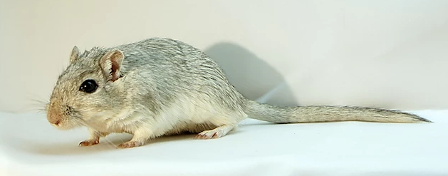

A- C- D- E- P- uwduwd :: Silver Agouti (Gray Agouti)
MS Valley, photo courtesy of Moonstone Gerbils
However, the difference between Black (aaUw-) and Slate (aauwduwd) is much more subtle. There is no yellow pigment present in the Black gerbil for the uwd allele to remove, so its only effect is to slightly dilute the black pigment. The pigment in the eyes is also affected, uwduwd eyes having a garnet shine when they reflect light.
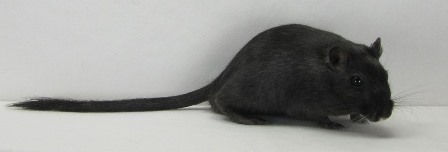

aa C- D- E- P- Uw- :: Black


aa C- D- E- P- uwduwd :: Slate
The underwhite (uw) mutation appeared in the US and is quite rare, found in the hands of only a select few breeders in North America. Underwhite also occurred separately in Singapore, and individuals from those lines have been imported to Canada. Agouti or Black, when combined with uwuw, results in a cream-beige coat and deep ruby eyes. Agouti-based Underwhite (A- uwuw) is somewhat lighter than Black-based Underwhite (aa uwuw). Adding ee to the mix gives a white coat instead; adding pp gives a white coat and lighter red eyes.
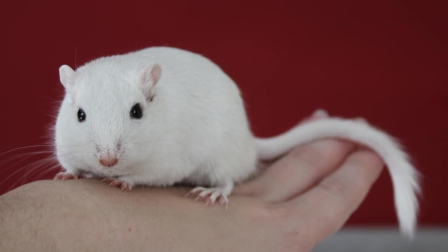

A- C- D- E- P- uwuw :: Underwhite Cream (Agouti-based)
Photo courtesy of Les Gerbilles d'Amour
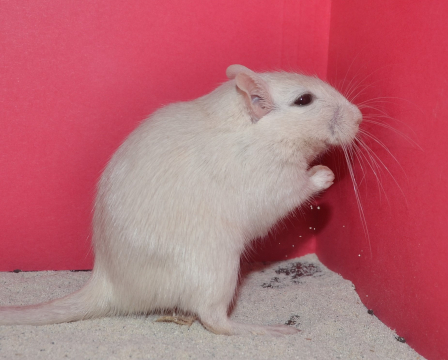
aa C- D- E- P- uwuw :: Underwhite Cream (Black-based)
Photo courtesy of Prairie Clan Gerbils
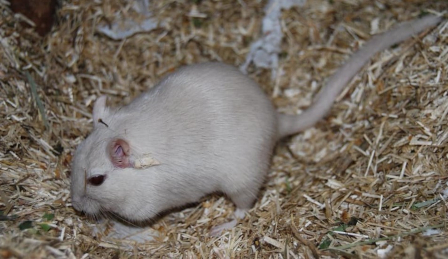
aa C- D- E- P- uwuw :: Underwhite Cream (Black-based)
Photo courtesy of Les Gerbilles d'Amour
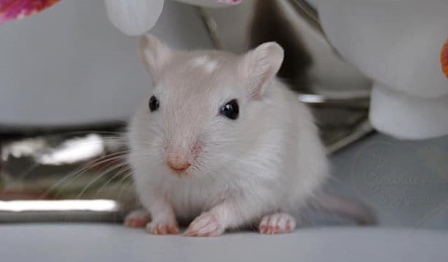
aa C- D- E- P- uwuw Sp+ :: Spotted Underwhite Cream (Black-based)
Photo courtesy of Les Gerbilles d'Amour
The intermediate underwhite-dense allele (uwd) is not fully dominant over the underwhite allele (uw). However, this effect is only really noticeable on one color: Azure Slate (aauwduw). Azure Slate is slightly lighter than a normal Slate.
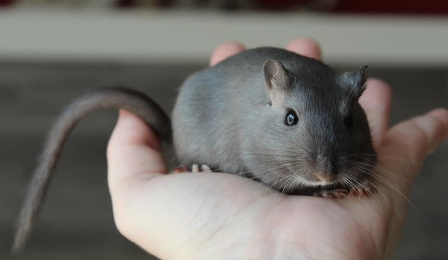


aa C- D- E- P- uwduw :: Azure Slate
Photos courtesy of Les Gerbilles d'Amour
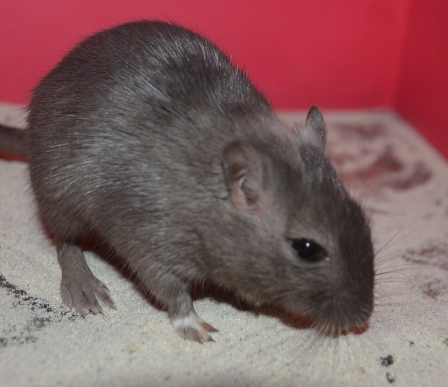
aa C- D- E- P- uwduw :: Azure Slate
Photo courtesy of Prairie Clan Gerbils

Unless otherwise specified, all text and images at this site are licensed under a
Creative Commons Attribution-Noncommercial-Share Alike 3.0 United States License